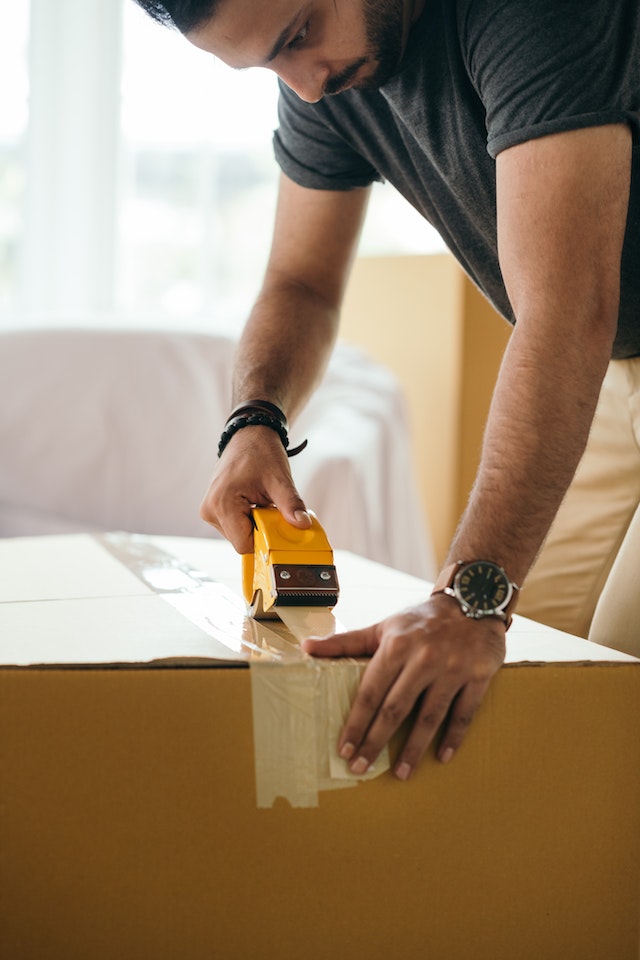Packing your belongings and moving to a new home can be very daunting. However, by creating a moving checklist and following it step-by-step, you can make the process much easier. Here are seven things that you must have on your moving checklist.
1. Boxes and Packing Supplies
One of the most important steps in preparing for a move is acquiring enough boxes and packing supplies. While it may be tempting to scrounge for old boxes or skimp on bubble wrap, investing in new and sturdy materials will make packing easier and ensure that your belongings are protected during transit. Taking an inventory of what you need to pack will also help you purchase the appropriate number of boxes and supplies.
Making this small investment in the beginning, can save you from headaches and potential damage down the road. So before embarking on your move, tick off boxes and packing supplies from your checklist.
2. Change of Address Form
When making your moving checklist, remember to fill out a change of address form with the post office. This will ensure all your mail is properly redirected to your new address and prevent any important documents from getting lost in the shuffle. Also, consider contacting banks, credit card companies, magazines, and other subscriptions, and anyone else who may need to know your updated information.
Taking care of this essential step can save you time and headaches during the transition period. And don’t forget to update your contact information on social media and online accounts! The last thing you want is for friends or colleagues not to be able to reach you after your big move. So, make sure changing your address is at the top of your moving checklist.
3. Utilities Information
One key aspect of moving that often gets overlooked is transferring or setting up utilities for your new home. While it may not seem like a pressing issue, it’s important to ensure that your electricity, water, and gas will work as soon as you move in. To prevent any hiccups, create a list of all the utilities you’ll need in your new home and gather the necessary information, such as account numbers and contact information for the companies.
Then, schedule transfers or set up appointments before your move-in date. This may involve some upfront planning and work, but it will pay off in the long run by ensuring a smooth transition into your new place.
4. Moving Company Information
Moving can be stressful and overwhelming, but hiring a full service moving company can make things significantly easier. Not only will they pack, transport, and unpack your belongings for you, but they also often offer insurance options to protect your valuables from any potential damage during the move. They also typically have experience and specialized equipment that makes the process smoother and more efficient.
In addition, full-service moving companies can handle the heavy lifting and difficult tasks such as disassembling furniture and properly hauling large appliances. Choosing a service moving company may come at a higher cost, but it can help alleviate some of the stress and hassle of relocating to a new home. Make sure to research a reputable company with positive reviews and proper certification before making your decision.
5. Inventory List
A key part of preparing for a move is creating an inventory list of all your belongings. This will come in handy for several reasons, such as helping you decide what to pack and leave behind, keeping track of your belongings during the moving process, and ensuring everything arrives safely at your new home.
When making your inventory list, include items such as furniture, appliances, electronics, clothing, and other household items. For each item, include a description, quantity, and value. This will help you keep track of your belongings and come in handy if you need to file an insurance claim for any lost or damaged items.
6. Identification and Important Papers
When packing up your home in preparation for a move, it’s important to keep track of all your important documents and identification. This includes birth certificates, passports, social security cards, tax records, insurance policies, and wills.
You’ll want to keep these items in a safe and accessible place during the move to find them when you need them easily. Additionally, it’s a good idea to make copies of all your important documents in case anything gets lost or damaged during the relocation process.
Conclusion
Moving to a new home can be an exciting but also stressful time. There are a lot of details to keep track of and things to remember to make sure the process goes smoothly. Following these tips can help ensure a successful move to your new home.

